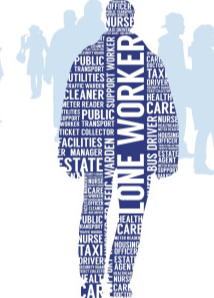In today’s diverse working environment, many roles no longer require the constant presence of colleagues or supervisors. Instead, a significant portion of the workforce now operates independently. This leads to the essential question: What is a lone worker?
What is a Lone Worker? Simply put, a lone worker is an individual who carries out work activities by themselves, without direct supervision or close contact with others. These workers may be situated in fixed locations such as warehouses, small retail shops, or isolated offices, or they may travel between various sites, such as delivery drivers, maintenance engineers, or sales representatives. Additionally, home-based workers, security personnel, and night shift employees frequently fall into this category.
The nature of lone working presents unique risks and challenges. Without immediate assistance nearby, a lone worker may face greater hazards, particularly in emergencies. Accidents, health incidents, or even instances of violence or aggression could leave a lone worker vulnerable if swift help is not readily accessible.
Understanding what is a lone worker also requires recognising the legal and moral responsibilities of employers. In the United Kingdom, the Health and Safety Executive (HSE) emphasises that employers must ensure the health, safety, and welfare of all employees, including those who work alone. This responsibility involves conducting thorough risk assessments to identify potential dangers specific to lone working roles and implementing appropriate measures to mitigate these risks.
Modern technology plays a crucial role in enhancing lone worker safety. Personal safety devices, smartphone applications, and regular check-in systems are increasingly used to monitor lone workers and provide an instant response in case of trouble. These tools can alert supervisors or emergency services quickly, significantly reducing the risks associated with working alone.
Moreover, adequate training is vital. Lone workers should be well-informed about the specific risks of their roles and know the correct procedures to follow in various scenarios. Communication protocols should also be clear and effective, ensuring that lone workers can report their status regularly and access support when needed.
In conclusion, fully understanding what is a lone worker is essential for both employers and employees. By acknowledging the unique challenges lone workers face and providing the necessary protections, businesses can create a safer, more supportive working environment for those who operate independently.




